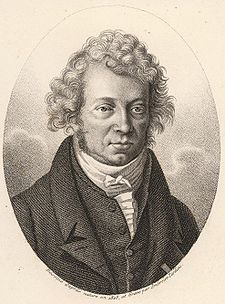When you're a first- or second-year EE student you've got enough other crap to think about that it usually doesn't occur to you to wonder why all the symbols for things are what they are. I was usually too busy frantically trying to solve for I to wonder why, in fact, they called it I and not C or something more logical. The only time I remember it ever even coming up was when we did things with complex numbers. Normally when you write out a complex number (if you've successfully put high school algebra out of your mind, a complex number is one with both real and imaginary components) you do it as the sum of the real and imaginary parts, with "i" being added to the imaginary so you can tell the difference (e.g. 5 + 3i). For various reasons, complex numbers turn up a lot in circuit theory, so EEs use "j" in place of "i" to represent the imaginary component of a complex number. You would think this would've sparked me to think "wait, isn't using I for current actually kind of confusing and stupid?" but I was probably thinking something more along the lines of "jesus christ math is hard and what's this crap with the letter j now? Fine, I'll call imaginary numbers whatever you want if you pass me."
Much later, I've learned what every engineer eventually learns (all that hard math they made you do as an undergrad can be done pretty trivially with a computer) and have managed to avoid doing all but the most basic math for years now. That and the general thrust of this blog is probably why I only got to wondering about the symbol for current over a decade after I learned it.
As with most things in the world, this one is all France's fault. One of the pioneering scientists who figured out the basics of electromagnetism back in the 19th century was a guy called André-Marie Ampère. His contributions to the field were so important that he achieved the rare science twofer of getting both an equation (Ampère's Force Law, one of Maxwell's equations) and a unit of measurement (the Ampère, usually shortened to the Amp) named after him (eat that, Einstein!). Said equation (Ampère's Law) basically states that an electric and/or magnetic field (this was pre-Maxwell, nobody knew they were pretty much the same thing yet) can cause charge in a conductor to move. Since the charge is "flowing" through the conductor kind of like a liquid flowing through a pipe, Ampere decided to call the rate of charge flow the "current," with the designation for the amount of current being the "current intensity," or intensité de courant in the original French. The canny reader will note that the first letter in that phrase is our culprit.
 |
| André-Marie Ampère (bottom) and his force law(s). |
Science is pretty much first-come-first-served with this stuff; Ampere figured it out first, so the naming conventions he used for the new units he derived became standard throughout the world pretty quickly (he didn't name the unit after himself, as that's widely considered to be a major Science Dick Move; someone else did that later). There was a bit of pushback in England, with some people persisting in using C for current as late as 1896, but in general everybody stuck with I and was pretty okay with it, probably because C was starting to be widely used for capacitance around the same time. Apparently older textbooks will still refer to current as "current intensity," although they apparently quit it with that before I went to college, hence the confusion.
Now that the US is the greatest empire in the history of the world and English is pretty much the universal language of science, it's easy to forget that that wasn't always the case. Lots of Western work in physics, chemistry, and biology was done in French, German, and even occasionally Italian well into the 20th century, once everybody gave up on Latin as a universal academic language.


Thank you thank you thank you... I've long had to explain to my students "well, we use 'j' instead of 'i' to avoid confusing 'i' for 'imaginary' with 'i' for 'current'." This typically gets blank stares (but is good for a chuckle from the more tuned-in members of the class). No more!
ReplyDeleteNice. Your post reminded me of Bill Bryson's book called "A short history of nearly everything". He goes through a lot of silly anachronisms we still carry around into modern science, and a lot of other science gossip/scandals too.
ReplyDeleteI knew there was something fishy behind this variable. Relating electrical current to actual "current" (i.e. hydraulic behavior) was the only way I could conquer my semester of circuits, although I passed the electrical sections of the FE (formerly, EIT) exam with no worries. I've also looked long and hard for this simple explanation when queried by a lady friend who teaches high school physics. Thanks for the "score"!
ReplyDeletebut why current is expressed as I??
ReplyDeleteFlow of Indensity is called current. The first letter of Indensity is 'I'
Deletei don't know but maybe youre a fucking idiot. read it again asshole
ReplyDeleteHaha...at long last...
ReplyDeleteGreat Find! Ive always wanted to know why "G" is used for conductance as well. Pls do share if you've already figured that as well!
ReplyDeleteThanks for sharing this post it's all information is really very nice and useful for me and other users.
ReplyDeleteMarine Shore Power Adapter
It'll be a cold day in hell before I recognize the works of a F***chman!
ReplyDelete